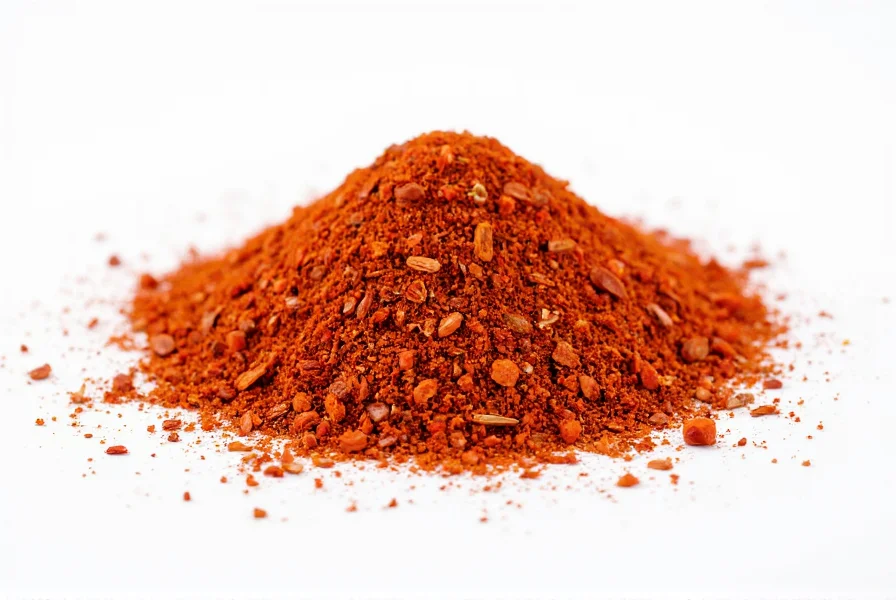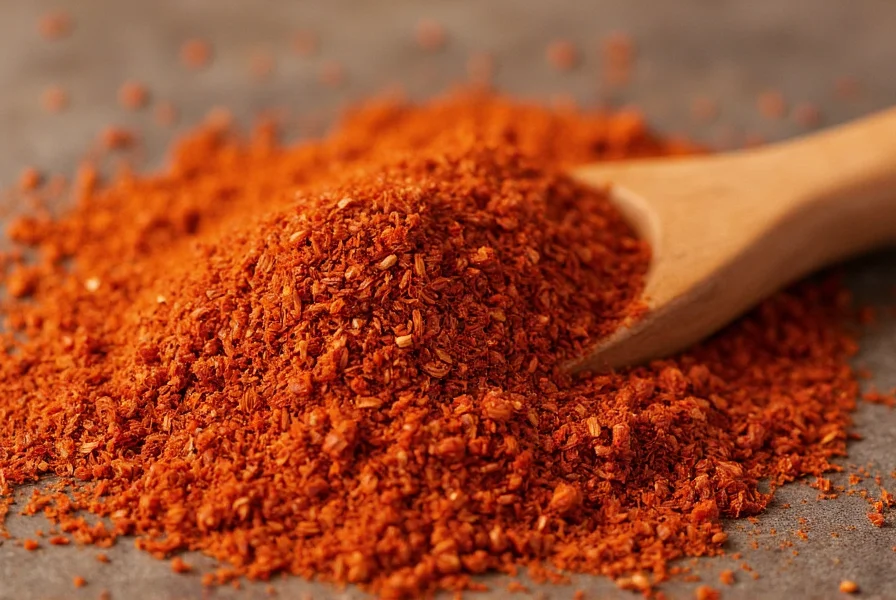Understanding crushed red chili flakes begins with recognizing their composition and culinary role. These vibrant red flakes consist of dried, coarsely ground cayenne peppers or similar varieties, preserving both the fruit and seeds for maximum flavor impact. The inclusion of seeds distinguishes them from smoother chili powders, delivering a more complex heat profile that builds gradually rather than hitting immediately.
What Makes Crushed Red Chili Flakes Unique
The texture and composition of crushed red chili flakes create distinct advantages in cooking. Their coarse grind allows for controlled heat distribution—add a pinch for subtle warmth or generous amounts for serious spice. The visible flakes provide visual appeal to finished dishes, unlike powdered alternatives that simply tint food red.
When examining crushed red chili flakes vs chili powder, the key differences emerge:
| Characteristic | Crushed Red Chili Flakes | Chili Powder |
|---|---|---|
| Texture | Coarse, visible flakes | Fine powder |
| Heat Source | Includes seeds and membranes | Usually seedless |
| Flavor Development | Gradual heat release | Immediate heat |
| Culinary Use | Finishing or cooking | Primarily cooking |
Optimal Culinary Applications
Professional chefs leverage crushed red chili flakes in specific ways that maximize their unique properties. The most effective uses for crushed red pepper flakes in cooking include:
- Pizza and pasta dishes: Sprinkled on finished dishes for controlled heat
- Oil infusions: Gently heated in olive oil to distribute flavor evenly
- Marinades: Combined with acids to help distribute heat throughout proteins
- Bread and biscuit toppings: Pressed onto dough before baking
- Finishing soups and stews: Added at the end for fresh heat
Unlike powdered alternatives, the flakes maintain their integrity during cooking, providing textural contrast that enhances the eating experience. For how to use crushed red chili flakes in Italian cooking, many chefs add them early in the cooking process for infused heat, then finish with additional flakes for texture and immediate spice.

Proper Storage Techniques
Maintaining the quality of your crushed red pepper flakes storage requires attention to environmental factors. Exposure to light, heat, and moisture rapidly degrades both flavor and heat intensity. For optimal shelf life:
- Store in an airtight container away from direct light
- Keep in a cool, dark pantry (below 70°F/21°C)
- Avoid storing above the stove or near heat sources
- Use within 6-12 months for peak flavor (though safe indefinitely)
Many home cooks wonder do you refrigerate crushed red pepper flakes. While not necessary, refrigeration can extend peak flavor for up to 18 months. If refrigerating, ensure the container is completely airtight to prevent moisture absorption, which causes clumping and flavor loss.
Effective Substitution Options
When you need crushed red chili flakes substitute options, consider both heat level and texture requirements:
- For similar texture and heat: Coarsely ground dried arbol or bird's eye chilies
- For milder flavor: Sweet paprika with a pinch of cayenne (1:1 ratio)
- For immediate heat without texture: Cayenne pepper (use ½ amount)
- For fresh alternative: Finely minced serrano peppers (use 2x amount)
Understanding what to use instead of crushed red pepper flakes depends on whether you prioritize heat, texture, or flavor complexity. For pizza applications where texture matters, consider making your own flakes by drying and crushing milder peppers like guajillo.

Quality Assessment When Purchasing
Not all crushed red chili flakes deliver equal quality. When selecting products, look for these indicators of premium quality:
- Bright red color (dull brown indicates age)
- Visible seed fragments (sign of whole-pepper processing)
- Minimal fine powder at container bottom
- Strong, clean aroma without mustiness
- Transparent packaging showing product quality
The question are all crushed red pepper flakes the same has a definitive answer: no. Quality varies significantly based on pepper variety, drying methods, and processing. Higher quality products typically use specific pepper varieties rather than generic "red peppers," resulting in more consistent heat and flavor.
Heat Level Management
Mastering how spicy are crushed red pepper flakes requires understanding their variable heat profile. Unlike standardized products, natural variation occurs between batches and brands. The heat builds gradually because the flakes release capsaicin slowly during cooking.
For precise heat control:
- Add early in cooking for infused, mellow heat
- Add during final minutes for sharper, more immediate spice
- Toast flakes briefly in oil to mellow their heat
- Rinse flakes under cold water to reduce heat intensity
When adjusting recipes, remember that crushed red pepper flakes to cayenne conversion isn't 1:1—use half the amount of cayenne powder to achieve similar heat levels due to the concentrated nature of powdered spice.











 浙公网安备
33010002000092号
浙公网安备
33010002000092号 浙B2-20120091-4
浙B2-20120091-4